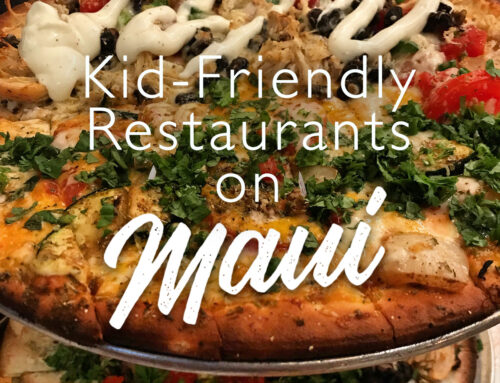Maui’s fruit scene is truly unique. Some of it came over in ancient canoes, some hitched a ride much later, and all of it could put your average supermarket apple to shame. From fruit that smells like gym socks to ones you’d swear were dessert, here are a few favorites.
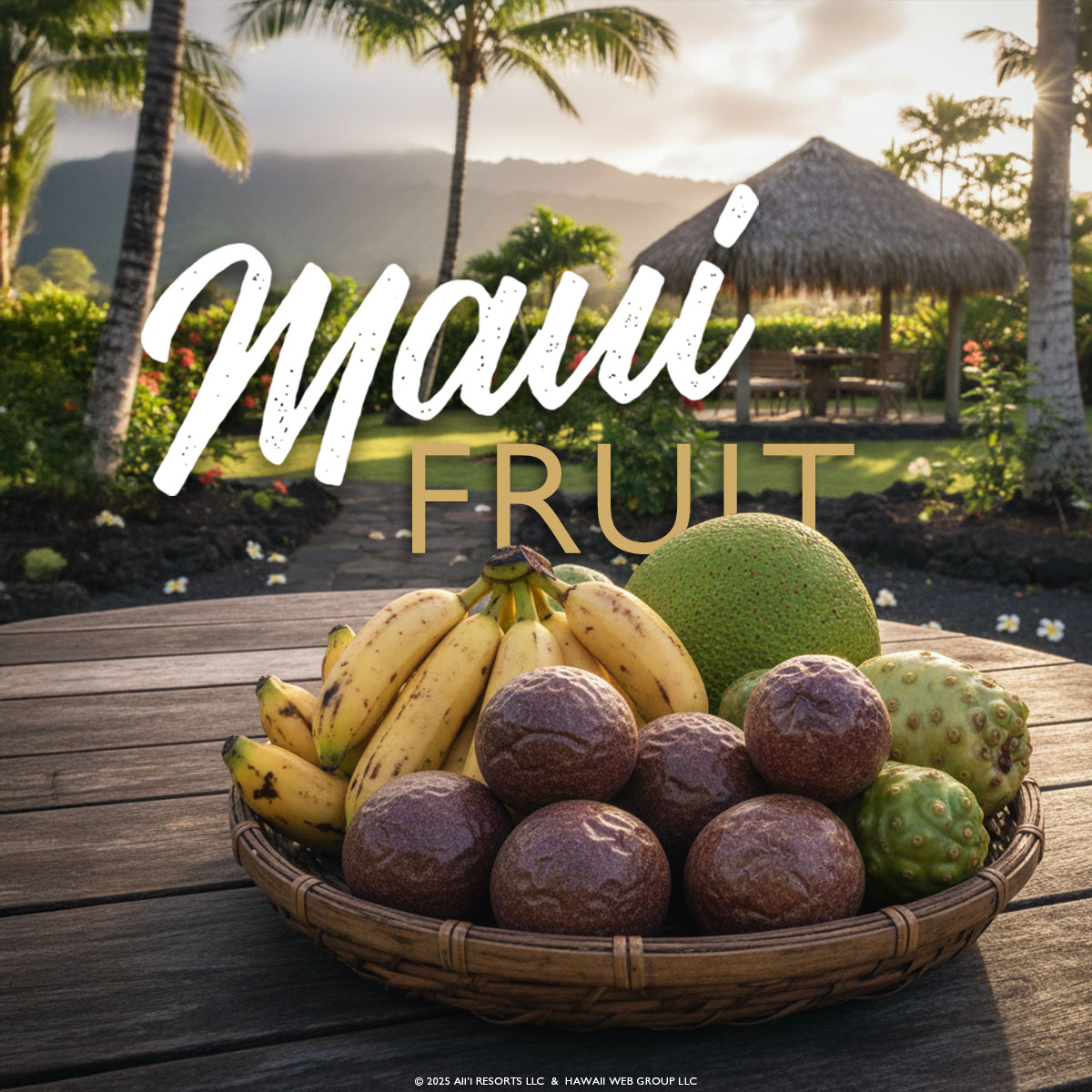

Polynesian Introduced “Canoe Plants”
These fruits are steeped in history, brought to Hawaii by the early Polynesians who navigated the Pacific with only the stars and their intuition. These weren’t just food sources, they were survival staples and spiritual tools.
ʻUlu – Breadfruit
‘Ulu is a starchy, potato-like fruit that was a cornerstone of ancient Hawaiian diets, often baked in underground imu ovens. When ripe and sweet, it can be used for desserts (although a bit funky.)
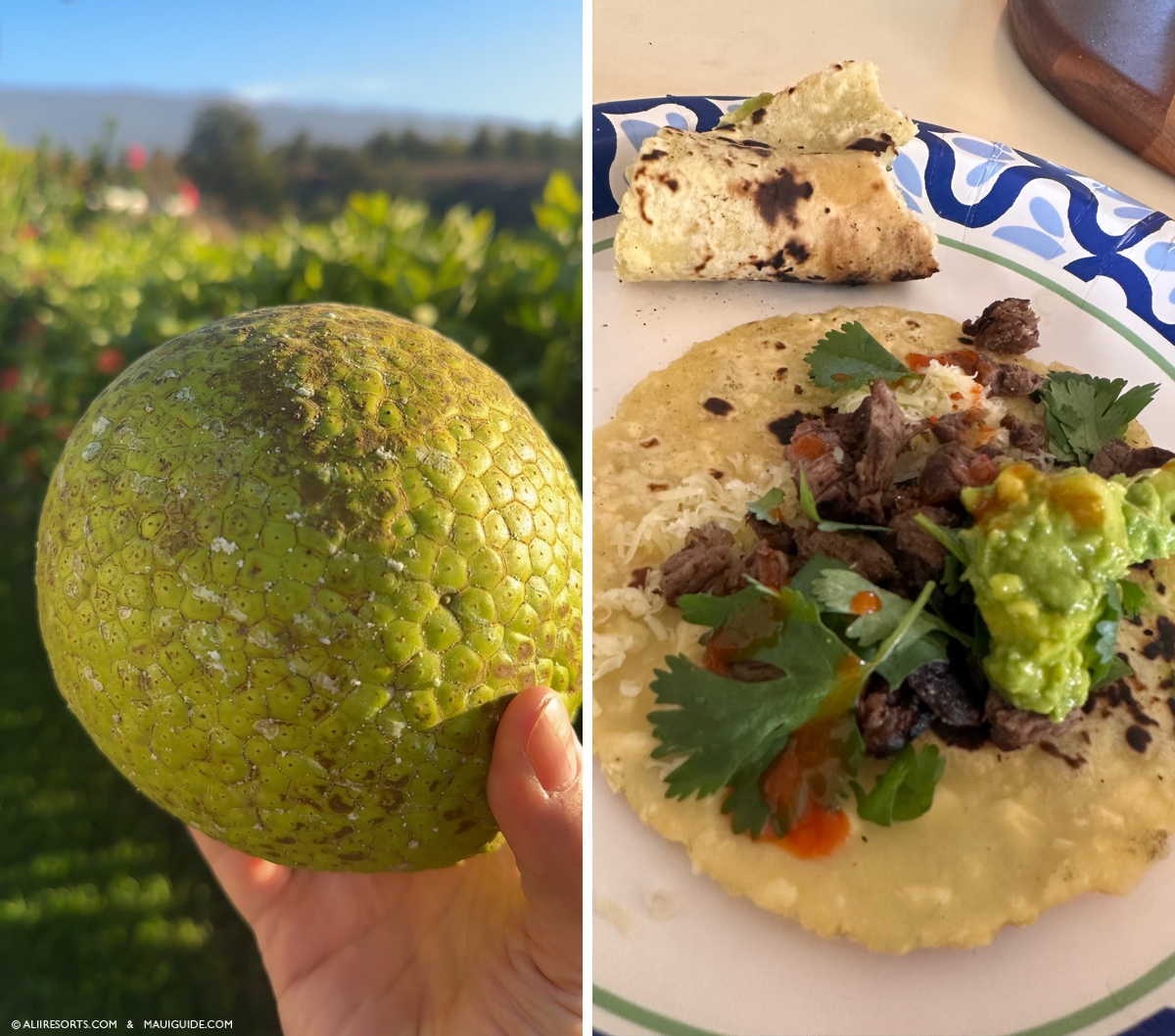
- One breadfruit tree can yield up to 200 fruits per season, each weighing around 10 pounds.
- High in complex carbs and fiber, it’s still a staple in many Pacific Island cuisines.
- On Maui, it’s used in everything from stews to vegan poke bowls.
- Our favorite use of it is pounding it with some flour and making it into tortillas.
In Hawaiian culture, the ‘ulu tree symbolizes abundance. Families would often plant one when a child was born, a gesture of long-term sustenance. If every home in Hawaii had an ‘ulu tree in their backyard, dependence upon mainland food sources would be inconsequential!

Mountain Apple – ‘Ōhi’a ‘ai
Despite the name, this fruit has no relation to apples. Glossy red or pink and shaped like a teardrop, mountain apples have a crisp texture and mildly floral flavor.
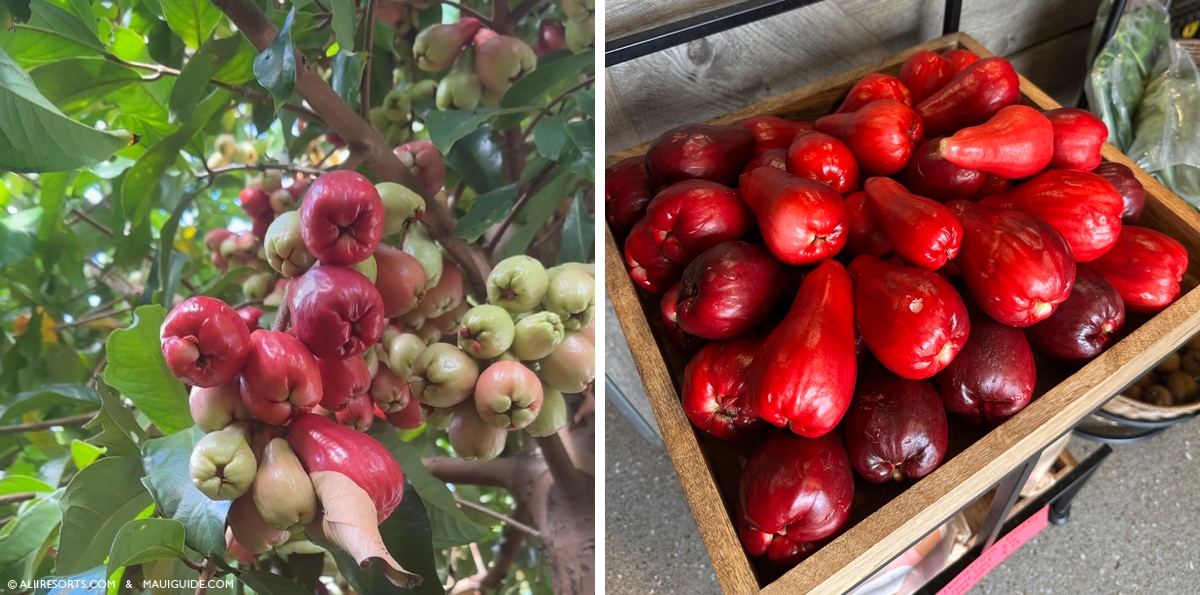
- Technically called Syzygium malaccense, it’s native to Southeast Asia and likes our climate.
- In Hawaiian lore, the tree was sometimes planted near homes to offer shade and food.
- It’s almost entirely water, over 90%, making it perfect for hydration in the islands’ tropical heat.
- Peak season is summer, and on Maui, you’ll find them tumbling from roadside trees in East Maui and Upcountry.
Mountain apples bruise easily and have a short shelf life, which is why you’ll rarely find them in mainland stores. In Hawaii, they’re a backyard gem. Though not great for cooking or jamming, it’s a tasty fruit when ripe and raw.

Noni
This fruit is for the brave. With a pungent odor and bitter flavor, noni is prized for its medicinal value, not for snacking.
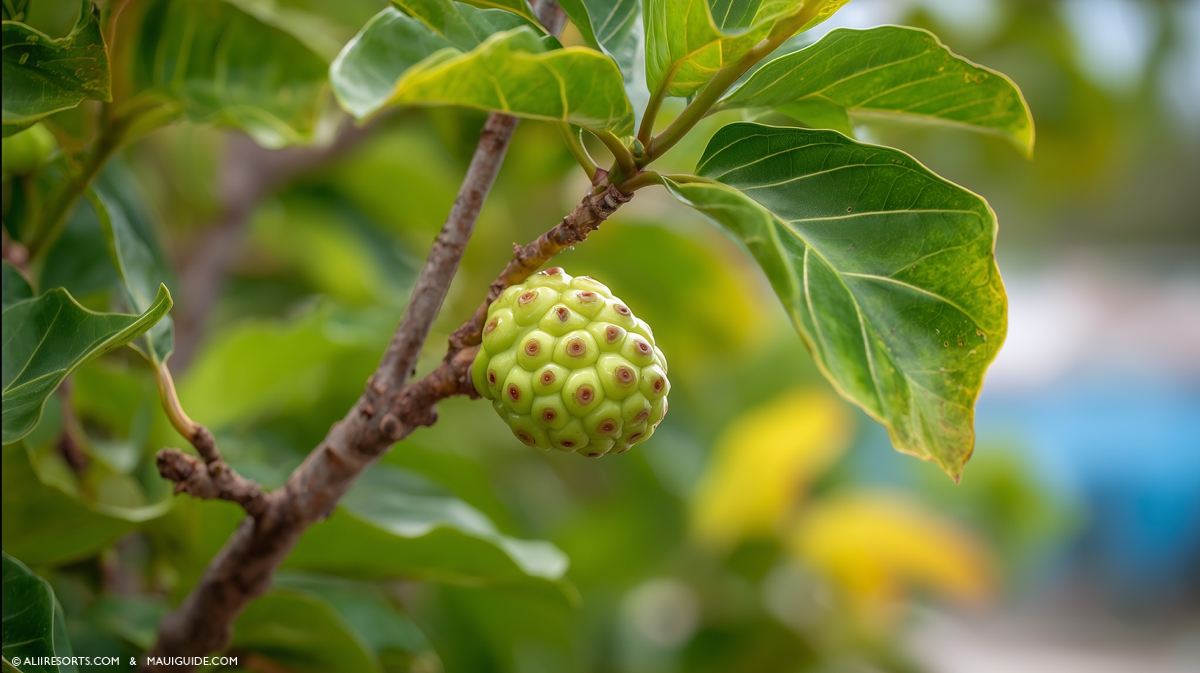
- Sometimes called “cheese fruit” due to its acrid smell, you’ll know when it’s ripe.
- Known for its high antioxidant and vitamin C content.
- Traditional Hawaiian healers used noni to treat everything from joint pain to infections.
- Still used today in health tonics and supplements, especially in Kahului’s wellness markets.
Noni juice is still sold on Maui, with local farms producing small-batch ferments. Just don’t expect it to go down easy. And if anyone has a better (tolerable) way to process it for consumption, please bring it to market!

Later Introduced, But Now Iconic
These fruits weren’t on the original Polynesian manifest, but they’ve taken root and flourished in Hawaii’s volcanic soil. Today, they’re found everywhere from hotel buffets to backyard gardens.
Lilikoi – Passion Fruit
Lilikoi is the showoff of the tropical fruit bowl. Small and sometimes wrinkled on the outside, inside it’s filled with bright yellow pulp and edible black seeds that burst with tart sweetness.
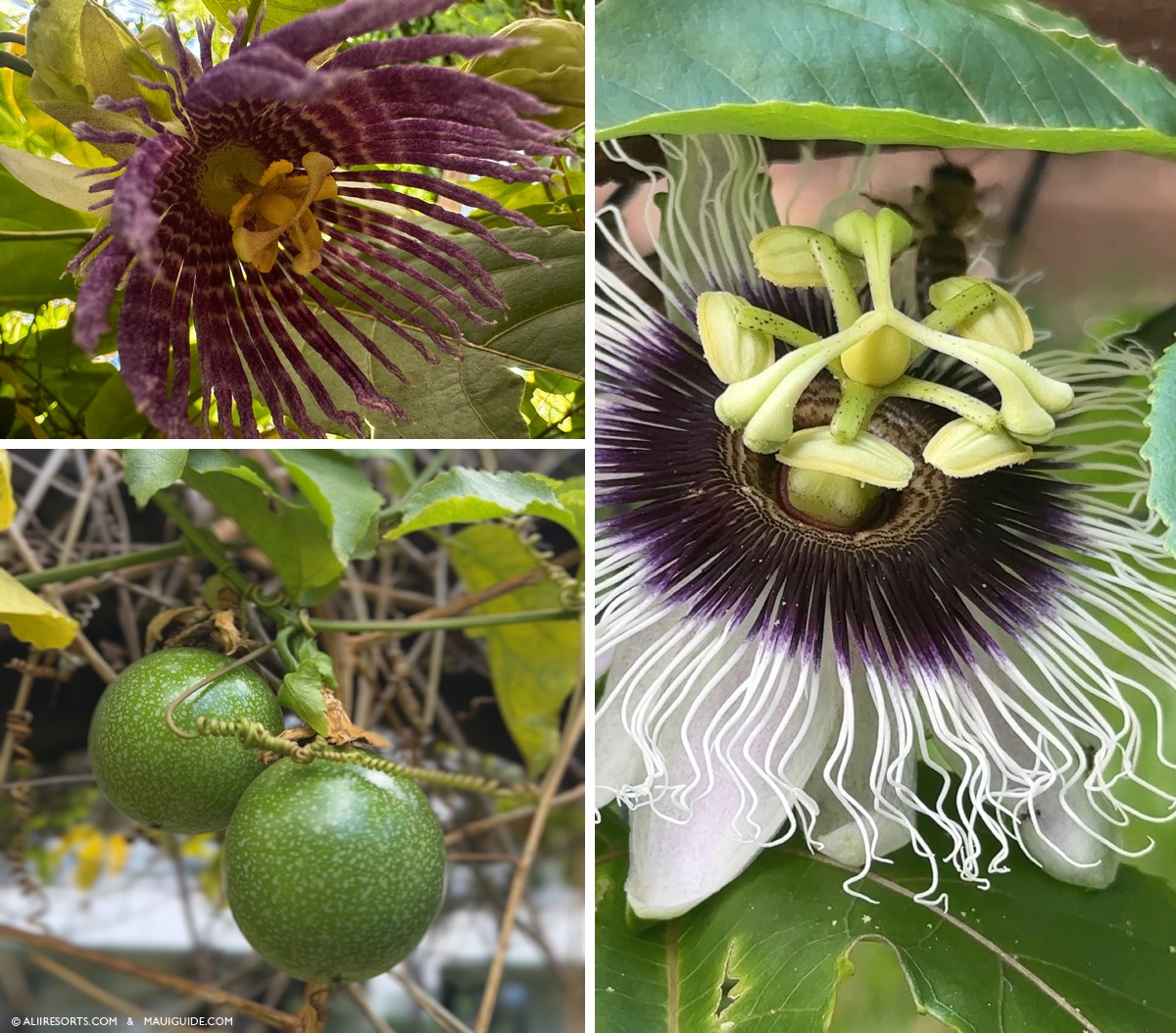
- Originally from Brazil, it thrives in Maui’s upcountry regions and warm coastlines.
- A single vine can produce hundreds of fruit in a season, though it usually takes time for the first harvest to happen.
- Lilikoi is used in syrup, mochi, jams/butters, vinaigrettes, malasadas, and even beer.
- The yellow variety is most common in Hawaii, though purple types grow too.
- The Jamaican Lilikoi is orange with a soft, edible shell. These are sweeter and are often compared to candy.
Its flavor is so bold it rarely needs company. Farmers markets from Kula to Kihei often feature homemade lilikoi butter that flies off the table.

Apple Bananas
Sweeter, firmer, and more compact than the grocery-store standard, apple bananas are the preferred variety on the islands.
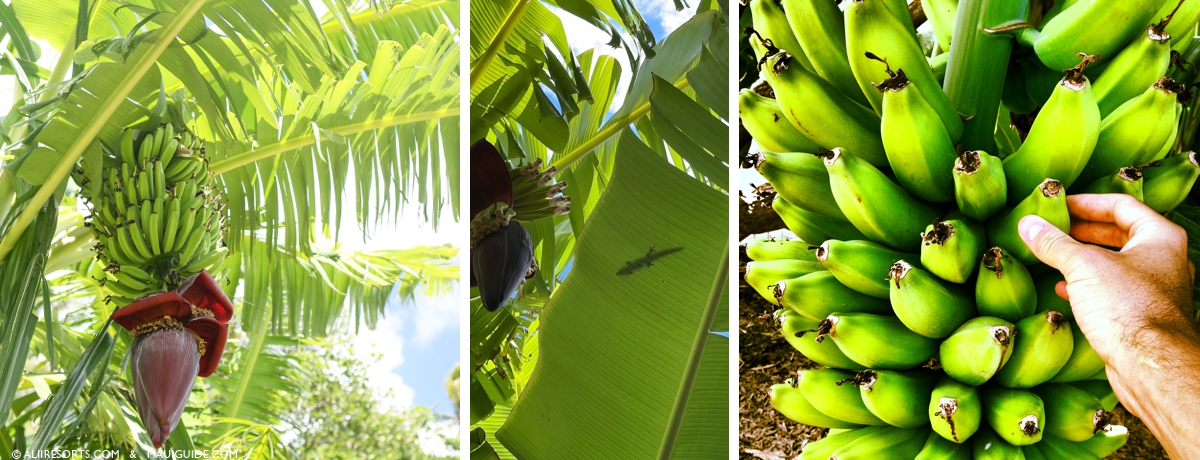
- Grown mostly on Maui and the Big Island, they have a subtle tang that recalls apples or strawberries.
- Ideal for smoothies, baking, or straight off the stalk.
- Their small size makes them less prone to bruising. a plus for active households. They’re snack-sized, making them more intriguing to keiki.
- Often sold in small hands (clusters), apple bananas ripen quickly in Hawaii’s humidity.
Visitors often mistake them for underripe Cavendish bananas. Locals know better.





